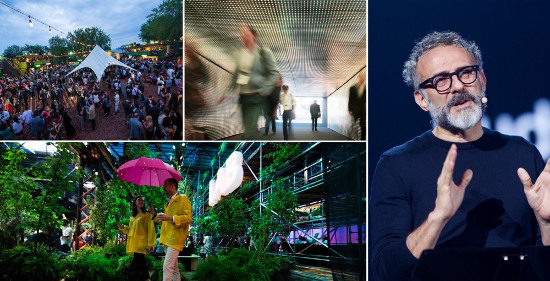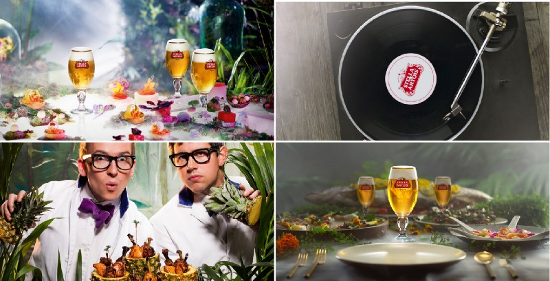
Content Monetisation: Fool’s Gold or Viable Goal?

According to many marketers, monetisation is the new Holy Grail of content marketing.
Traditionally, content marketing nurtures awareness and consideration for products or services, eventually resulting in sales. Content monetisation is a bit different: We’re not talking about making profits through sales driven by content. It’s the idea that a brand produces content of such quality that it will be self-sustaining, generating profits by itself. Just like content producers such as movie studios, could marketers sell the rights to their content? Can marketers craft content IPs and sell them back to the very medias whose audiences they once paid to access? Can we imagine a world where content distributors (websites, TV, telcos) PAY brands for their content? Can we imagine consumers paying brands directly for access to content?
That’s the bet many marketers are making. And some are winning.
Transforming content into value: Who does it best?
A great example is the Michelin Guide, produced by tire manufacturer Michelin. What was once a free travel guide filled with tips on car maintenance is now one of the most respected sources of travel and gastronomy content. Its authority is undeniable and consumers around the world now gladly pay for their copy of the Michelin Guide because they see the value of this content. Even if it is branded. Also, let’s not forget that due to the popularity of the Michelin Guide, the brand now hosts a variety of sponsored content on its other touch points. Again, more revenues. But this example is 100 years old and was rather unique until recently.
Another major player — if not the most influential one when it comes to content — is Red Bull (Remember Red Bull Stratos? Yeah, of course you do). With a plethora of content initiatives, Red Bull does a very impressive job of promoting itself, while delivering its brand promise through rich narratives that appeal to its target consumer base. As a privately owned company, Red Bull’s numbers aren’t public, but industry insiders know that many content distributors have paid licenses to access Red Bull content. They are in effect paying for Red Bull advertising, albeit very sophisticated and subtle (and not-so-subtle) advertising. Consumers have done the same by buying Red Bull documentaries both online and in movie theatres, not to mention the Red Bulletin magazine available on news stands. The Red Bulletin, just like the Benetton Colors magazine in its heyday, even sells advertising space to other brands!
Michelin, Red Bull, and a select few other marketers have one thing in common: They built a qualified audience from the ground up. And that audience is the key to revenues. Note the importance of the word “audience” vs. “consumers”.
But let’s not fool ourselves. For each Red Bull, there are hundreds of brands still dabbling in content marketing and wondering if they can generate profits. Just breaking even would be a tremendous win for them.
So the big question is:
Can my brand’s content generate profits?
Yes… but mostly no.
To put things in perspective, one of the most ambitious content “monetisers” is Mondelez, owner of Cadbury, Oreo, Ritz, and many more global powerhouse brands. Mondelez aims for “10% of the company’s global media investments to break even or turn a profit by 2020.”
PepsiCo is getting more vocal about its monetising goals. In an interview with Warc, Brad Jakeman, President/Global Beverage Group at PepsiCo, confirmed that the house of brands is hungry for content-generated revenues:
“My ultimate goal is for our billion-dollar brands to actually fund their own marketing, so that we leverage the equity of the brand to produce content which we then sell [and] which we can then put back into the marketing for those brands.”
But PepsiCo is far from having reached this goal: “We think we have a line of sight towards becoming a double-digit million-dollar business in the next three years,” Jakeman says.
Not bad. Very good in fact. But no Holy Grail in sight. Yet.
It is estimated that, only in the USA, brands will spend more than $192 billion this year on advertising and content. To think that they will collectively generate revenues of that magnitude is simply delusional in our opinion, especially with content distributors under pressure from diminishing revenues and consumers not being very keen on paying for content, especially branded content.
So if profit-generating content is to be considered the exception in the years to come, what can a brand do to move the needle on monetisation?
Partial monetisation is the key
Driving SOME revenue from branded content initiatives may not turn your marketing into a profit centre, but it can help turn your “consumers” into an “audience”, and that’s a huge win.
Why?
- Because you want to publish “audience-worthy” content and not simply interruption-based advertising shoved down the throats of “consumers”. Partial monetisation (part of the cost or part of what you produce) is a powerful way to force both clients and agency partners to elevate their game. Developing branded content that people will pay for is such an ambitious goal that it drives quality through the roof.
- Having a real audience enables you to hand-pick some top-quality contents and partially monetise them.
Two examples coming from our own experience at Sid Lee:

we created the C2 conference in 2012 (a global event on innovation with 5,000 participants from 50 countries), we needed to generate close to $10,000,000/year in revenues, just to break even. And we did. Now, C2 is a company in its own right and with its own talented management team, because we made it good enough to be able to sell tickets at close to $3,000 a piece.

Stella Artois, Le Savoir, Sid Lee
More recently, we developed a series of events for AB InBev and applied the same thinking. What if Stella Artois’ culinary and sensory experience “Le Savoir” were unique enough to sell tickets to our audience? We designed the event with this objective in mind and funded part of it by successfully selling tickets in all the cities we visited. On this topic, Lukas Derksen, Managing Partner at Sid Lee, adds: “Compelling live consumer entertainment experiences are business drivers through ticketing, licensing, and sponsorships. We’re in the midst of mass disruption and it is led by a younger generation. They skip, block, ignore traditional ads. They aren’t where we’ve always messaged. They know more YouTube stars than TV channels. We need a new way forward and we need to create our own audiences.”

Stella Artois, Le Savoir, Sid Lee
Monetisation, even partially achieved, is very difficult. But it is worth the effort as it makes branded content “audience-worthy”, as we like to say at Sid Lee.
Co-branded content: A lower hanging fruit?
To improve the marketing bottom-line, you can generate revenues… or reduce costs. One clever way to do that is to team up with other marketers.
We are encouraging our clients to team up with other brands when audiences and goals overlap. The question we like to ask ourselves is simple: Which brands can benefit from a 1+1 = 3 situation?
By pooling their resources, brands can either split the production and media costs of campaigns, or invest the same amount and allow themselves greater impact.
Sharing distribution channels is another valuable perk of co-branded content. First of all, because it allows your brand to be exposed to a qualified, complementary audience. Second, because, from a consumer point of view, it can create a whole new content narrative for your products or services.
Let’s take the example of a yoga clothing brand, and a healthy organic food brand. It’s fair to assume both brands share audiences with similar profiles and interests. In this example, the partner brands could create a “healthy living” content series, providing useful nutrition and exercise tips, celebrating an active lifestyle. Both brands would benefit from being exposed to the other brand’s network, earning awareness and consideration. Production and media costs would be lowered for each brand, making this a win-win situation.
Examples abound in our view:
Home improvement retailer with top soil brand
Fine spirits brand with a hotel chain
Cereal brand with a toy brand
Car brand with a golf brand
Horror movie with life insurance company
Make-up / clothing
Headphones / audio brand with an orchestra or legendary venues
Soft drink brand with a video game brand
Takeaways
- As of today, only a fraction of brands’ content is successfully monetised.
- Generating profits with content currently serves as a “North Star” towards which global houses of brands are working.
- Qualified brand audiences are the key to successful revenue creation and the appeal for other brands to work in a co-branded fashion.
- Partial monetisation does not make your content a profit centre, but it forces you to develop “audience-worthy” content, a huge step forward. Challenge your agency partners to think in turn of “business models” for content.
- Co-branded content will allow a brand to reduce costs and/or increase the impact of their campaigns.
- A brand should work with an expert content strategy agency to set up a business model for its content and serve as a go-between for two would-be partner brands.
Co-writers: Jean-François Bouchard, Jean-Sébastien Martel & Joachim Coste at Sid Lee













